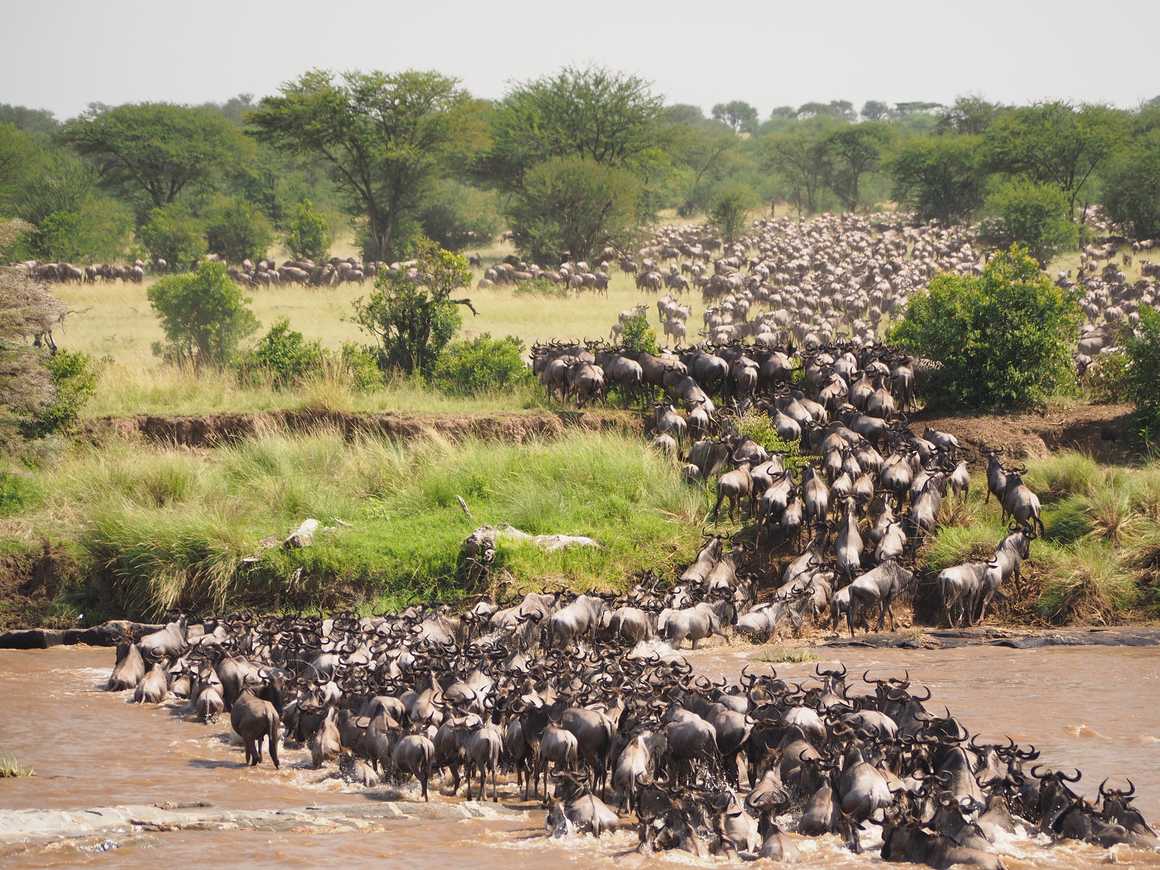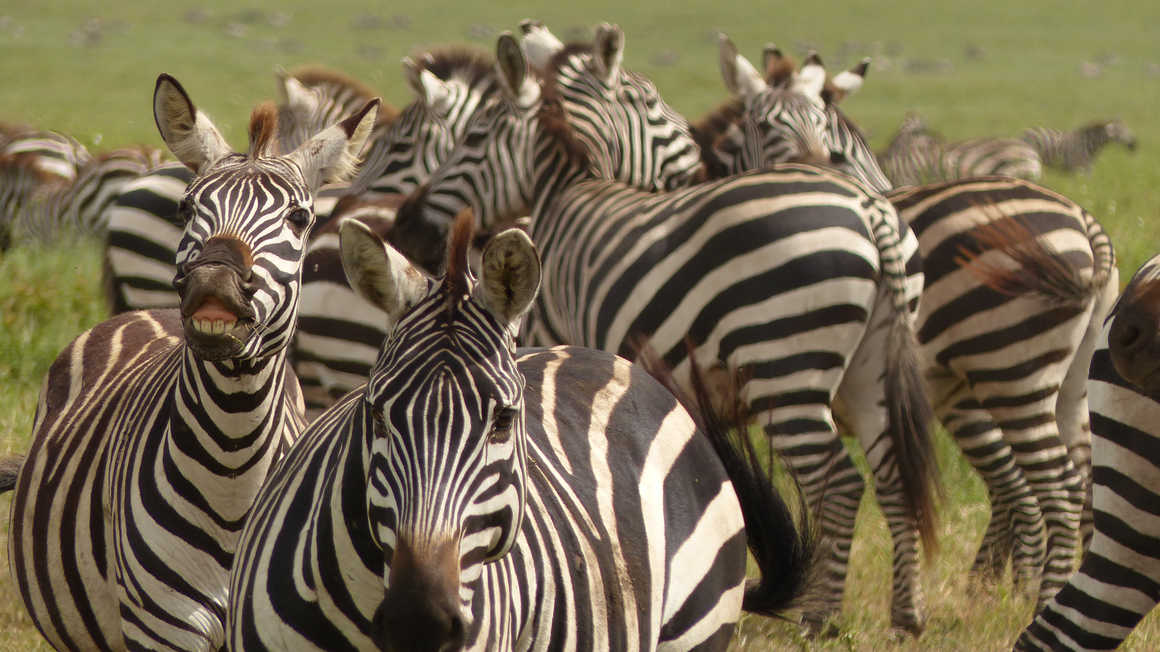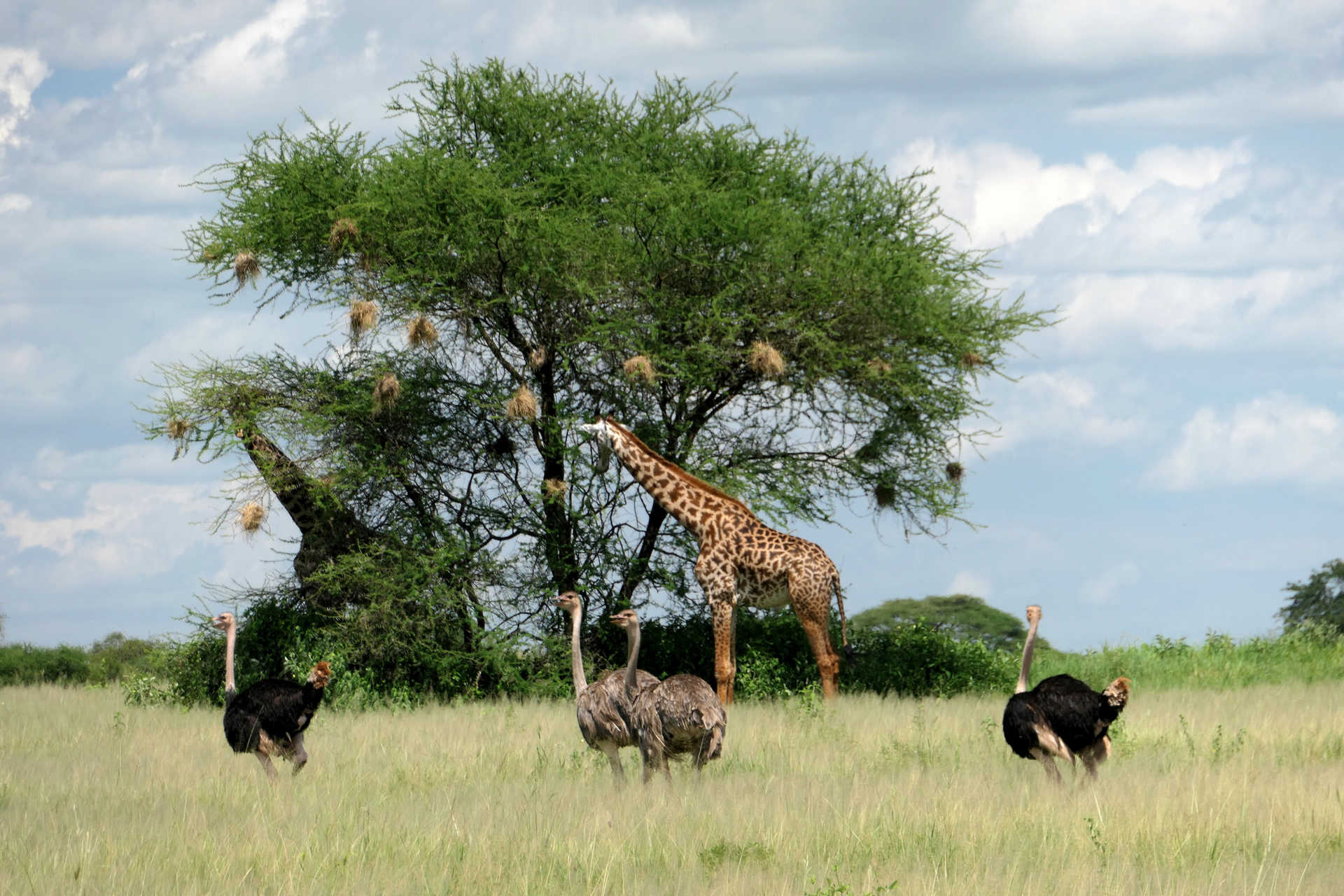Tanzania is fast becoming one of the most popular destinations in Africa. Its vast array of eco-systems, wildlife and tropical weather has made the country a haven for safari tours.
Due to the country’s close proximity to the equator, the weather in Tanzania is incredible constant with daytime temperatures normally ranging from 25°C to 32°C. This means that tourists are able to visit all year-round. However, when it comes to safaris, different periods offer up greater chances of seeing certain animals and events (like balloon safaris).
To help you plan the perfect Tanzanian safari and to get the most out of your trip, we’ve written an overview on the best time to go on safari in Tanzania month by month.
January
The wet season is in full swing during January and western parks such as Gombe, Mahale and Kavati will most likely have continuous rain. Humidity is generally very high during January, however, the open plains of the Serengeti will make a difference to this, as will the altitude of Ngorongoro Crater where temperatures will be cooler. By January the epic wildebeest migration has arrived on the Serengeti and the end of the month sees the beginning of the calving season. This is a popular period and you will need to book well ahead.

February
The wet season remains in February, and like January, the western safari parks are probably best avoided. February is without doubt the best time of year to see wildebeest calving. The calving generally happens in Ndutu in the southern part of the Serengeti. Here you will see around 500,000 calves being born and taking their first teetering steps. Bird lovers will also enjoy the wet season as migratory birds from Europe begin passing through Tanzania. February is the best time to see the Greater and Lesser flamingos around Lake Natron.
March
March sees the beginning of the heavy rain season where frequent thunderstorms and heavy clouds permeate the days. Many roads are closed and you’ll need to contact an expert prior to leaving. March is a particular favourite for bird lovers, especially around Lake Manyara. This period is fairly quiet, and therefore cheaper. Because of the lush vegetation and flowers that come to life in this period, wildlife is harder to spot.
April
The heavy wet season continues in April and the many lodges and roads will close down. This is probably the cheapest month to visit Tanzania on safari. The wildebeest begin making their way up into the foothills and if you have weatherproof camera gear, you’ll get some great shots! April is also the least busy period, making the atmosphere far more tranquil.
May
Although technically still the rainy season, in recent years May has been pleasantly dry for the most part, particularly later in the month. Whilst much of the wildlife has left Tarangire by now, many wildebeest will be heading north in May, making for some great shots! Trails and roads are still fairly empty and you’ll be able to enjoy some clear days without the crowds.
June
June sees the beginning of the dry season and is one of the most popular months to visit Tanzania on safari. Because of recent rains, the lands are still lush and beautiful unlike later months when the area becomes dry and barren. In June the wildebeest migration has gathered by the Grumeti River. Here they wait and build numbers before attempting the crocodile filled crossing. If you’re in the right place at the right time you may see this spectacular event!
July
Probably the busiest month of the year, July is also the driest month of the year with less than 13mm average fall of rain. This means that the plains are dry and dusty, but wildlife is easy to spot. The wildebeest are crossing crocodile infested rivers in the north of the Serengeti whilst chimpanzees are roaming the Mahale Mountains National Park and Gombe National Park. If you want a slightly cooler experience the head to Ngorongoro Crater, however, expect to pay a premium.
August
By August the foliage has fallen and the grasses have been trampled, making it far easier to spot wildlife. Whilst the wildebeest migration has probably entered Kenya by now, wildlife returns to Tarangire. Elephants are a common site here, as are many of the Big 5 that congregate down by Tarangire river.
September
Still warm and sunny, September is an ideal time for river safaris and fishing tours. Both Tarangire and Ngorongoro Crater are popular during this period and the Serengeti become far more quiet. The wildebeest and zebra migration may start heading back south from Kenya, crossing the Masai Mara during this period. River crossings are common but this will depend on rainfall.

October
October sees the very beginning of the wet season. Although not common, showers do happen during this month which you should take into account. Much of the wildlife during this month gathers around Katuma River which means tourist have an excellent opportunity to see a range of species in a small area. Arusha national Park is also popular during this period, and although wildlife is not as prevalent as other parks, leopard and hyenas are frequently spotted.
November
In November the rains once again arrive, but with the rains comes the migration. The wildebeest will have definitely returned from Kenya by now and you’ll see huge herds on the move. Rain will be persistent, particularly up north, but the rolling thunder clouds will make for some epic shots! Top predators are prevalent now in search of new born herbivores and there will be far fewer safari vehicles on the tracks.
December
The parks are incredibly popular over Christmas and New Year, so make sure to book early. The rains during December ease slightly and there will be plenty of opportunities to spot the wildebeest migration as they arrive back on the Serengeti plains. December is also an excellent time for bird watches as the migratory birds begin arriving from Europe. Look out for cinnamon-breasted buntings, red-necked spurfowl and purple grenadiers! If you have any further questions regarding when to go on safari in Tanzania, please contact us here.










